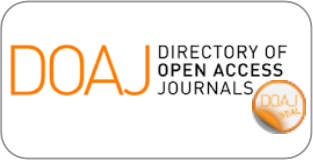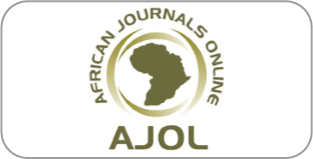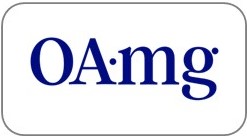Genetically Modified Mosquitoes to Fight Malaria in Nigeria, Burkina Faso, Mali and Uganda: What Legal Response?
DOI:
https://doi.org/10.17159/1727-3781/2022/v25i0a12582Keywords:
Genetically modified mosquitoes, genetically modified insect technologies, international regulation, legal response, prospective African countries, domestic regulation, malaria, public health tool, African regionAbstract
Advanced applied research on genetically modified (hereafter GM) insects is being undertaken to control insect vectors of human diseases such as mosquitoes. GM insect technologies are being developed in countries where there is a legal framework for genetically modified mosquitoes (hereafter GMM), but the beneficiaries of such insect technologies to control insect-borne diseases are most likely to be in malaria-endemic countries where the regulation of GM insect technologies is inadequate. Although no commercial release of GMM has been conducted in Africa yet, there may be prospects for the use of GMM to control malaria in malaria-endemic countries such as Nigeria, Burkina Faso, Mali and Uganda. Nigeria has the highest rate of deaths related to malaria in Africa and will potentially be targeted by companies seeking to introduce GMM as a public health tool in African countries. Research is being carried out on GMM in Burkina Faso, Mali and Uganda in collaboration with foreign companies. Whereas the control of diseases is certainly needed and there are potential public health benefits for GM insect technologies to address mosquito control, there are environmental and health concerns, and there is also the potential of the misuse of such technologies. Consequently, the use of GMM requires prior robust domestic, regional and international regulation. While the Cartagena Protocol on Transboundary Movements of Living Modified Organisms (LMOs) to the Convention on Biological Diversity (hereafter the Cartagena Protocol) and voluntary guidelines on the testing of GM mosquitoes are applicable with respect to GM insect technologies, there is a lack of international and regional guidance on the regulation of such technologies. Domestic legislation tends to focus on GM crops and is inadequate for regulating GMM. This paper discusses the legal response for the above African countries which may perhaps use GMM as a public health tool and makes recommendations for the necessary regulatory response.
Downloads
References
BIBLIOGRAPHY
Literature
Academy of Science of South Africa (ASSAF) GMOs for African Agriculture: Challenges and Opportunities Workshop Proceedings Report 2010
Alonso PL and Tanner M “Public Health Challenges and Prospects for Malaria Control and Elimination” 2013 Nature Medicine 19 (2) 150-155 DOI: https://doi.org/10.1038/nm.3077
Alphey L and Beech C “Appropriate Regulation of GM Insects” 2012 PLoS Neglected Tropical Diseases 6(1) e1496 DOI: https://doi.org/10.1371/journal.pntd.0001496
Beisel U and Boete C “The Flying Public Health Tool: Genetically Modified Mosquitoes and Malaria Control” 2013 Science as Culture 22(1) DOI: https://doi.org/10.1080/09505431.2013.776364
British Parliamentary Office of Science and Technology (BPOST) Genetically Modified Insects (Houses of Parliament United Kingdom POST Note Number 360 2010).
Carvalho D O et al “Supression of a Field Population of Aedes aegypti in Brazil by Sustained Release of Transgenic Male Mosquitoes” 2015 PLoS Neglected Tropical Diseases 9(7) e000386 DOI: https://doi.org/10.1371/journal.pntd.0003864
Chambers JA Biosafety of GM Crops in Kenya, Uganda and Tanzania: An Evolving landscape of Regulatory Progress and Retreat (Center for Strategic and International Studies, 2013)
European Food Safety Authority (EFSA) European Food Safety Authority Panel on Genetically Modified Organisms Guidance on the environmental risk assessment of genetically modified animals 2013 EFSA Journal 11(5) 3200 DOI: https://doi.org/10.2903/j.efsa.2013.3200
GeneWatch UK Oxitec’s Genetically Modified Mosquitoes: In the Public Interest? Briefing December 2010
GeneWatch UK 2015 Oxitec’s Genetically Modified Mosquitoes: A Credible Approach to Dengue Fever?
Guy Reeves R et al “Scientific Standards and the Regulation of Genetically Modified Insects” 2012 PLoS Neglected Tropical Diseases 6(1) e1502 1. DOI: https://doi.org/10.1371/journal.pntd.0001502
Greenwood et al “Seasonal vaccination against malaria: a potential use for an imperfect malaria vaccine” 2017 Malaria Journal (16) 182 DOI: https://doi.org/10.1186/s12936-017-1841-9
Harris A, Nimmo D and Alphey L (2011) “Field performance of engineered male mosquitoes” 2011 Nature Biotechnology 29(11) 1034-1039 DOI: https://doi.org/10.1038/nbt.2019
Harris A et al “Successful suppression of a field mosquito population by sustained release of engineered male mosquitoes” 2012 Nature biotechnology 30(9) 828-830 DOI: https://doi.org/10.1038/nbt.2350
Knols BGJ et al “Transgenic Mosquitoes and the Fight against Malaria: Managing Technology Push in a Turbulent GMO World” in Breman JG, Alilio MS and White NJ (eds) Defining and Defeating the Intolerable Burden of Malaria III: Progress and Perspectives Supplement to volume 77(6) of American Journal of Tropical Medicine and Hygiene 2007 DOI: https://doi.org/10.4269/ajtmh.2007.77.i
Lavery JV, Harrington, LC and Scott TW “Ethical, Social and Cultural Considerations for Site Selection for Research with Genetically Modified Mosquitoes” 2008 The American Journal of Tropical Medicine and Hygiene 79 3 312-318 DOI: https://doi.org/10.4269/ajtmh.2008.79.312
Lee LM “A bridge back to the future: Public health ethics, bioethics, and environmental ethics 2017 American Journal of Bioethics 17 (9) 5–12 DOI: https://doi.org/10.1080/15265161.2017.1353164
Legros M et al “Assessing the Feasibility of Controlling Aedes Aegypti with Transgenic methods: A Model-based evaluation” 2012 PLoS ONE 7 e 52235 DOI: https://doi.org/10.1371/journal.pone.0052235
Maiga H et al “Seasonal malaria chemoprevention with sulphadoxine-pyrimethamine and amodiaquine selects Pfdhfr-dhps quintuple mutant genotype in Mali” 2016 PLoS ONE 11: e0162718 DOI: https://doi.org/10.1371/journal.pone.0162718
Marshall JM “Commentary: The Cartagena Protocol in the Context of Recent Releases of Transgenic and Wolbachia-infected mosquitoes” 2011 Asia-Pacific Journal of Molecular Biology and Biotechnology 19(3) 93-100
Marshall JM “The Cartagena Protocol and Genetically Modified Mosquitoes” 2010 Nature Biotechnology 28 896-897 DOI: https://doi.org/10.1038/nbt0910-896
Mshinda H et al “Development of Genetically Modified Mosquitoes in Africa” 2004 The Lancet Infections Diseases 5(5) 264 DOI: https://doi.org/10.1016/S1473-3099(04)01000-X
Nang’ayo F, Simiyu-Wafukho S and Oikeh SO “Regulatory Challenges for GM Crops in Developing Economies: the African Experience” 2014 Transgenic Research 1049 DOI: https://doi.org/10.1007/s11248-014-9805-0
Okorie PN et al “Perceptions and Recommendations by Scientists for a Potential Release of Genetically Modified Mosquitoes in Nigeria”2014 Malaria Journal (13) 154 DOI: https://doi.org/10.1186/1475-2875-13-154
Ostera G and Gostin L “Biosafety Concerns Involving Genetically Modified Mosquitoes to Combat Malaria and dengue in Developing Countries” 2011 Georgetown Public Law and Legal Theory Research Paper No. 11-28 305 (9) 930-931 DOI: https://doi.org/10.1001/jama.2011.246
Powell K “Biologists try to work out bugs in GM insect technology” 2014 Nature Medicine 10 216 DOI: https://doi.org/10.1038/nm0304-216a
Quemada H “Regulation of Transgenic Mosquitoes” in Adelman ZN (ed) Genetic Control of Malaria and Dengue (Academic Press, Elsevier, 2016) 363-372 DOI: https://doi.org/10.1016/B978-0-12-800246-9.00016-8
Quinlan MM “Assessing Risk of Transgenic Insects” in Benedict MQ (ed.) Transgenic Insects: Technique and Applications (CAB International, Italy 2014) 282-305 DOI: https://doi.org/10.1079/9781780644516.0283
Resnik DB “Ethical Issues in Field Trials of Genetically Modified Disease-Resistant Mosquitoes” 2014 Developing World Bioethics 14 1 37-46 DOI: https://doi.org/10.1111/dewb.12011
Secretariat of the Convention on Biological Diversity (CBD), Final Report of the Ad Hoc Technical Expert Group on Risk Assessment and Risk Management under the Cartagena Protocol on Biosafety, Conference of the Parties to the Convention on Biological Diversity serving as the Meeting of the Parties to the Cartagena Protocol on Biosafety, Fifth Meeting, Nagoya, Japan, 11-15 October 2010, Item 13 of the provisional agenda, Distr. General, UNEP/CBD/BS/COP-MOP/5/INF/15* 3 August 2010
Secretariat of the Convention on Biological Diversity (CBD) Guidance on Risk Assessment of Living Modified Organisms and Monitoring in the Context of Risk Assessment Biosafety Technical Series 04 2016
Sture J, Whitby, S and Perkins S “Biosafety, Biosecurity and Internationally Mandated Regulatory Regimes: Compliance Mechanisms for Education and Global Health Security” 2013 Medicine Conflict and Survival 29(4) 289-321 DOI: https://doi.org/10.1080/13623699.2013.841355
Swanby H Cottoning on to the Lie: The Introduction of Genetically Modified Cotton in Africa will Harm, not Help, Smallholder Farmers (African Centre for Biodiversity (ACB), 2015)
Uzuazo E “Country Report: Nigeria – The Cart before the Horse?: Biosafety Regulations and Modern Biotechnology Activities in Nigeria” 2015 IUCN Academy of Environmental Law e-Journal 5 312
Wambugu FM “The Importance of Political Will” in Contributions of Agricultural Biotechnology. Towards Economic Growth, Food and Nutritional Securities in Africa” in Wambugu F and Kamanga D (eds) Biotechnology in Africa: Emergence, Initiatives and Future (Springer, Switzerland 2014) 1-14 DOI: https://doi.org/10.1007/978-3-319-04001-1_1
World Health Organisation (WHO) World Malaria Report 2014
World Health Organisation (WHO) Guidance Framework for Testing of Genetically Modified Mosquitoes 2014
Zawedde BM et al Policies and Laws of Relevance to Regulation of Agricultural Biotechnology in Uganda Policy Brief No 3, 2012, Uganda Biotechnology and Biosafety Consortium (UBBC)
Internet sources
African Union (AU) List of States parties available at: http://www.au.int/en/countryprofiles accessed on March 2017
Agaba J “Ugandan Scientists Skeptical of Revised GMO Bill” 29 November 2018, Alliance for Science, https://allianceforscience.cornell.edu/blog/2018/11/ugandan-scientists-skeptical-revised-gmo-bill/ accessed on 15 September 2021
Biosafety Clearing-House (BCH) Convention on Biological Diversity Online Forum on Risk Assessment and Risk Management available at: https://bch.cbd.int/onlineconferences/forum_ra.shtml accessed on 9 June 2017
British Ecological Society (BES) Genetically modified insects A response from the British Ecological Society to the House of Lords Science & Technology Committee 23 September 2015 available at: http://www.britishecologicalsociety.org/wp-content/uploads/GM-Insects_BES-Response_Final.pdf accessed on 13 April 2017
Convention on Biological Diversity List of States parties having ratified the NSP available at: https://bch.cbd.int/protocol/parties/#tab=1 accessed on 10 October 2021
Frischknecht F The History of Biological Warfare, European Molecular Biology Organization (EMBO) Report 2003 4(1) S47–S52 available at: https://www.ncbi.nlm.nih.gov/pmc/articles/PMC1326439/ accessed 24 April 2017 DOI: https://doi.org/10.1038/sj.embor.embor849
Health and Safety Executive (HSE) The Approved List of biological agents HSE 2013 Misc 208(rev2) available at: www.hse.gov.uk/pubns/misc208.htm accessed on 15 October 2021
Health and Safety Executive (HSE) The Genetically Modified Organisms (Contained Use) Regulations 2014 available at: http://www.hse.gov.uk/pUbns/priced/l29.pdf accessed on 8 September 2017
International Service for the Acquisition of Agri-biotech Applications (ISAAA), Pocket K No. 16: Global Status of Commercialized Biotech/GM Crops in 2014, available at http://www.isaaa.org/resources/publications/pocketk/16/ (last accessed March 2017)
International Service for the Acquisition of Agri-biotech Applications (ISAAA), COMESA Regional Biotechnology and Biosafety Policy Implementation Plan Validated 2017 available at: http://www.isaaa.org/kc/cropbiotechupdate/article/default.asp?ID=13270 accessed on March 2017.
International Service for the Acquisition of Agri-biotech Applications (ISAAA), Pocket K No. 16: Biotech Crop Highlights in 2019 available at: https://www.isaaa.org/resources/publications/pocketk/16/ accessed on 18 September 2021
Joshi A Genetically Engineered Insects: A Boon or Curse? CBW (Chemical and Biological Weapons) Magazine Institute for Defence Studies and Analyses July-December 2014 available at: http://www.idsa.in/cbwmagazine/Geneticallyengineeredinsects_ajoshi accessed on 16 March 2017
Marshall JM et al “Perspectives of People in Mali Toward Genetically-modified Mosquitoes for Malaria Control” 2010 Malaria Journal 9 128 available at: https://malariajournal.biomedcentral.com/articles/10.1186/1475-2875-9-128 accessed on 25 April 2017 DOI: https://doi.org/10.1186/1475-2875-9-128
Mosqguide website available at: http://www.mosqguide.org.uk/ accessed on 17 September 2021
Muheebwa H “Uganda Parliament Passes Bill to Promote Use of Genetically Modified Materials” Biotechnology 3 November 2017 available at: https://www.ip-watch.org/2017/11/03/uganda-parliament-passes-bill-promote-use-genetically-modified-materials-biotech/ accessed on 31 January 2018
Muzan MA “Institutional Mechanisms For Biosafety in Nigeria: An Appraisal of the Legal Regime Under the National Biosafety Management Agency Act 2015 2018 Law, Environment and Development Journal 14(1) available at: http://www.lead-journal.org/content/18029.pdf
Nigerian Federal Ministry of Health, Department of Public Health, available at: http://www.health.gov.ng/index.php/department/public-health accessed on 31 January 2018
Powell K “Biologists try to work out bugs in GM insect technology” 2014 Nature Medicine 10 (216) available at: http://www.nature.com/nm/journal/v10/n3/full/nm0304-216a.html accessed on 19 September 2016 DOI: https://doi.org/10.1038/nm0304-216a
Reuters “African Union to Start Talks with WHO on Rollout for First Ever Malaria Vaccine for Children” 7 October 2021 https://www.news24.com/news24/africa/news/african-union-to-start-talks-with-who-on-rollout-for-first-ever-malaria-vaccine-for-children-20211007 accessed on 8 October 2021
Sanchez-Bayo “Ecological impacts of Insecticides”
Sanchez-Bayo F “Ecological impacts of Insecticides” in Farzana P (ed) Insecticides-Advances in Integrated Pest Management (InTech Open Access Publisher, 2012) Chapter 3 61-90 available at: DOI: https://doi.org/10.5772/28683
http://www.intechopen.com/books/insecticides-advances-in-integrated-pest-management/ecological-impactsof-insecticides accessed on 21 April 2017
Schnurr http://gmosandpoverty.com/ugandas-national-biosafety-act/
Schnurr M “Uganda’s National Biosafety Act, 29 december 2017, Can Genetically Modified Crops Help the Poor” 29 December 2017 available at: http://gmosandpoverty.com/ugandas-national-biosafety-act/ accessed on 31 January 2018
Secretariat NAPPO https://www.nappo.org/files/1814/3753/9399/RSPM27-e.pdf
Secretariat of the North American Plant Protection Organization (NAPPO) Guidelines for Importation and Confined Field Release of Transgenic Arthropods in NAPPO Member Countries NAPPO Regional Standards for Phytosanitary Measures (RSPM) No 27 2007 available at: https://www.nappo.org/files/1814/3753/9399/RSPM27-e.pdf accessed on 20 April 2017
SACGM Compendium of guidance www.hse.gov.uk/biosafety/gmo/acgm/acgmcomp/
Scientific Advisory Committee on Genetic Modification (SACGM) Compendium of guidance www.hse.gov.uk/biosafety/gmo/acgm/acgmcomp/ accessed on 5 October 2021
Swetlitz I A Revolutionary Genetic Experiment is Planned for a West African Village-If Residents Agree STAT 14 March 2017 Scientific American available at: https://www.scientificamerican.com/article/a-revolutionary-genetic-experiment-is-planned-for-a-west-african-village-if-residents-agree/ accessed on 9 May 2017
UNEP http://new.unep.org/dewa/africa/docs/en/AEO2_Our_Environ_Our_Wealth.pdf
United Nations Environment Programme (UNEP), Africa Environmental Outlook 2, 2006 available at: http://new.unep.org/dewa/africa/docs/en/AEO2_Our_Environ_Our_Wealth.pdf accessed on March 2017
UNODA http://disarmament.un.org/treaties/t/bwc
United Nations Office for Disarmament Affairs (UNODA) Convention on the Prohibition of the Development, Production and Stockpiling of Bacteriological (Biological) and Toxin Weapons and on their Destruction, Status of the Treaty available at: http://disarmament.un.org/treaties/t/bwc accessed on 17 January 2018
Van Wynen Thomas and Thomas 1970 Legal Limits on the Use of Chemical and Biological Weapons
Ann Van Wynen Thomas and Thomas AJ Jr. Legal Limits on the Use of Chemical and Biological Weapons (Southern Methodist University Press, Dallas, 1970)
World Health Organization (WHO), WHO issues new guidance for research on genetically modified mosquitoes to fight malaria and other vector-borne diseases 19 May 2021 available at: https://www.who.int/news/item/19-05-2021-who-issues-new-guidance-for-research-on-genetically-modified-mosquitoes-to-fight-malaria-and-other-vector-borne-diseases accessed on 15 September 2021
WMA http://www.wma.net/en/20activities/10ethics/10helsinki/
World Medical Association (WMA) Declaration of Helsinki available at: http://www.wma.net/en/20activities/10ethics/10helsinki/ accessed on 16 March 2017
International sources
Cartagena Protocol on Transboundary Movements of Living Modified Organisms, 29 January 2000 UNTS 2226 p 208
Convention on the Prohibition of the Development, Production and Stockpiling of Bacteriological (Biological) and Toxin Weapons and on their Destruction
March 1975 UNTS 1015 p 163
Convention on Biological Diversity, adopted 5 June 1992 and entered into force 29 December 1993 UN Doc UNEP/Bio.Div/N7-INC.S/4 reprinted in (1992) 31 ILM 818.
Nagoya-Kuala Lumpur Supplementary Protocol on liability and redress to the Cartagena
Protocol on Biosafety 15 October 2010 50 ILM 105.
Legislation
Burkina Faso
Loi n° 064-2012/AN du 20 décembre 2012 portant régime de sécurité en matière de biotechnologie)
Décret nº 2013- 046/présidentiel promulguant la loi n° 064-2012/an du 20 décembre 2012 portant régime de sécurité en matière de biotechnologie. Journal Officiel n°25 du 20 juin 2013 p. 5410
Mali
Loi N°08-042 du 1er décembre 2008 relative à la sécurité en biotechnologie en République du Mali); Décret N°10-682/P-RM du 30 Décembre 2010 déterminant les modalités d’expérimentation des organismes génétiquement modifiés)
Nigeria
National Biosafety Management Agency Act (NBMAA) of 2015, Laws of the Federation of Nigeria
National Environmental Standards and Regulations Enforcement Agency Act 57 of 2007, Laws of the Federation of Nigeria
Uganda
National Biosafety Act of 2017
National Biotechnology and Biosafety Bill, Bill No 18, 2012, Bills Supplement to the Uganda Gazette No 63, volume CV, 23 November 2012
National Council of Science and Technology Act of 1990 (Chapter 209) of the Laws of Uganda
United Kingdom
Anti-terrorism, Crime and Security Act of 2001 (c.24) The Stationery Office DOI: https://doi.org/10.1080/10576100118878
Approved Code of Practice and guidance L5 (Sixth edition) HSE Books 2013
Environmental Protection Act of 1990 (c, 43) The Stationery Office 1990
Health and Safety at Work etc Act of 1974
Control of Substances Hazardous to Health Regulations 2002 (as amended)
Genetically Modified Organisms (Contained Use) Regulations 2014 Fifth edition of L29
Management of Health and Safety at Work Regulations 1999 SI 1999/3242 The Stationery Office
The Genetically Modified Organisms (Risk Assessment) (Records and Exemptions) Regulations 1996 (SI 1996/1106 The Stationery Office) , as amended by the Genetically Modified Organisms (Deliberate Release and Risk Assessment – Amendment) Regulations 1997 (SI 1997/1900 The Stationery Office)
The Control of Substances Hazardous to Health Regulations 2002 (as amended).
The Genetically Modified Organisms (Deliberate Release) Regulations 2002 SI 2002/2443 The Stationery Office
The Specified Animal Pathogens Order 2008 SI 2008/944
The Specified Animal Pathogens (Wales) Order 2008 SI 2008/1270 (W.129)
The Specified Animal Pathogens (Scotland) Order 2009 SI 2009/45 The Stationery Office
The Plant Health (England) Order 2005 SI 2005/2530
The Plant Health (Wales) Order 2006 SI 2006/1643 (W.158) DOI: https://doi.org/10.1016/S0084-3970(08)70152-X
The Plant Health (Scotland) Order 2005 SI 2005/613 The Stationery Office
European Union
EC Regulation 1829/2003 (22 September 2003)
EU Regulation 1946/2003 (15 July 2003)
EC Directive 18/2001 (12 March 2001)
EC Directive 41/2009 (6 May 2009)
Published
Issue
Section
License
Copyright (c) 2022 Odile Juliette Lim Tung

This work is licensed under a Creative Commons Attribution 4.0 International License.
















.png)